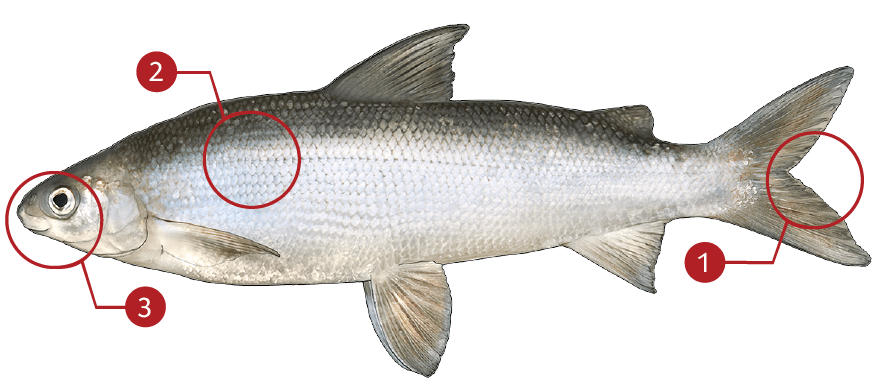LAKE WHITEFISH
How to identify a Lake Whitefish
The lake whitefish is a member of the salmon family, as can be noted by the presence of the adipose fin and pelvic axillary process. Overall coloration is silvery to satiny white with olive to pale greenish brown on the back. The back may be dark brown to black in some inland lake specimens. The mouth is subterminal and the snout protrudes beyond it. Because the head is small in relation to the length of the body, older fish may develop a hump behind the head; thus the name “humpback.” The lake whitefish has more pyloric caeca, 140-222, than either the round, with 50-130, or mountain lakefish which has 50-146. The body is more laterally compressed than the round or mountain whitefish, which belong to a group referred to as “round whitefishes”.
Where to catch Lake Whitefish
The lake whitefish is found throughout Canada and Alaska and into the extreme northeastern portions of the United States, throughout the Great Lakes as well as from New York to Maine. Transplanted populations exist in Washington, Idaho, and Montana in the northwestern United States. The lake whitefish is much more widespread and attains a much larger size than either the mountain whitefish or the round whitefish.
IDENTIFICATION

| |
Tail fin of the lake whitefish is distinctly forked |
| |
Coloration is typically silver to white with an olive to pale-green or brown dorsal hues |
| |
Distinct and deeply forked tail |
TARGET AREAS
|
|
Acknowledgements: We thank TAKEMEFISHING.org (www.takemefishing.org), Wisconsin Department of Natural Resources, Indiana Department of Natural Resources for their contributions to these FISH FACTS.

